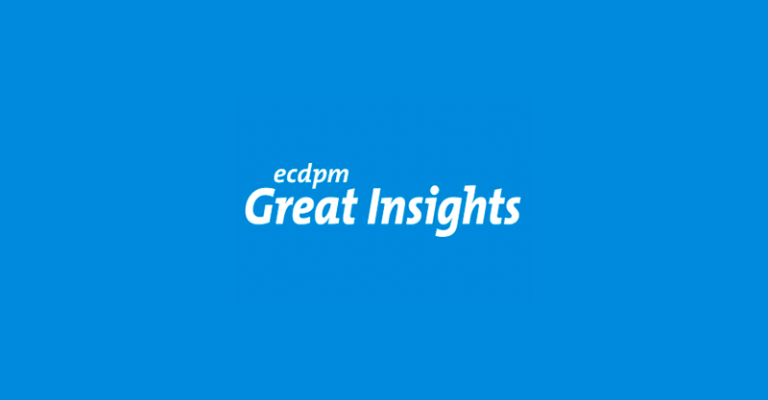
She drives change - Editorial
No regions, countries or communities can meet the challenges of the 21st century without fully and equally involving women and men, girls and boys.
In the words of Kofi Annan, “Gender equality is more than a goal in itself. It is a precondition for meeting the challenge of reducing poverty, promoting sustainable development and building good governance.” Perhaps even more importantly, equality is about recognising the full humanity of all individuals.
This assessment has led to the development of several strategies, policies and programmes aiming to support gender equality: the 2030 Agenda for Sustainable Development dedicates one of its goals to achieving gender equality; the African Union puts women empowerment and full gender equality as key aspirations of its Agenda 2063; and the EU launched last year its Gender Action Plan 2016-2020. These examples show that equality in rights, opportunities and responsibilities is a universal issue – even though context-specific. But they are also long-term objectives if we consider the slow pace to close gender gaps, which the World Economic Forum optimistically estimated at 47 years in the Western Europe and 63 years in Sub Saharan Africa.
Gender equality is not only a political commitment and objective, but also an instrumental means for sustainable development, as shown by the World Bank’s ‘Smart Economics’ approach. Hence several financial institutions and private sector actors have started implementing ambitious strategies, programmes and/or products aiming to empower women and foster women and men’s equality.
While these are obviously welcome and laudable initiatives, the real challenge is to learn from such experience–whether driven by the development community, African countries’ governments or other stakeholders–and better understand how the political, social and economic factors and actors’ incentives and constraints shape and influence the impacts and unintended consequences of such strategies and programmes on women and men.
One important lesson is that there is no one-size-fits-all approach to gender-related issues. Taking the case of trade liberalisation policies, recent research demonstrates that gender-blind policies may in fact undermine women’s empowerment – something that can only be understood by taking into account the local political, economic and social context. Women often work in very specific jobs and stages of value chains, such as small-scale farming, or the clothing or hospitality industries. While reducing tariffs for certain crops may increase trade and generate economies of scale (thus providing cheaper products to consumers), it may decrease the income of small-scale farmers. When such policies indeed contribute to the creation of more and better jobs in the agro-processing/clothing industries, women tend to be stuck in the low-skilled and less profitable jobs (e.g. labour-intensive tasks like packaging). Impact assessment based on gender-disaggregated data is therefore crucial to better inform policy decision-making.
Further, to be effective, gender-sensitive programmes in Europe as in Africa need to address power relations and deal with the incentives and constraints that shape women’s and men’s behaviours and relations. As reflected in recent campaigns advocating for women and men’s equality such as “heforshe”, gender equality is not just a women’s issue – it’s a human rights issue. Involving men and boys in the political, societal and social arenas (as role models) is key to designing sustainable solutions addressing gender inequalities. Otherwise policies and programmes aiming to empower women and girls will continue to come up against the barrier of male power and expectations, structures and beliefs that benefit men over women. This requires incentivising men and boys by showing the value in equal opportunities for women and girls, and the issues related to the restriction of boys and young men to traditional ‘male’ roles.
Providing the link between policy and practice is thus one of the objectives of this issue, which combines concrete examples on the one hand, and recent changes in the (development) policy field. This issue of GREAT Insights brings together many perspectives and insights on the varied and innovative approaches pursued to rise to these challenges. As always, we hope you enjoy them, and we welcome your comments and suggestions.
Read the full magazine issue






